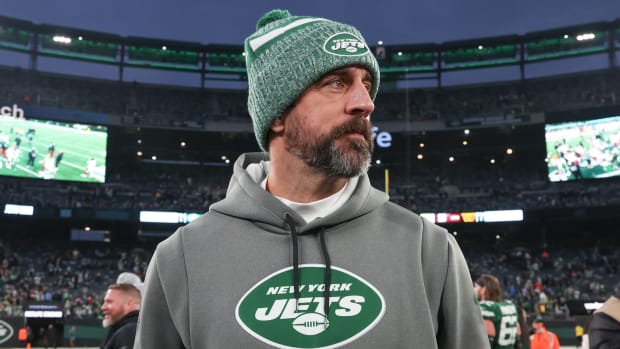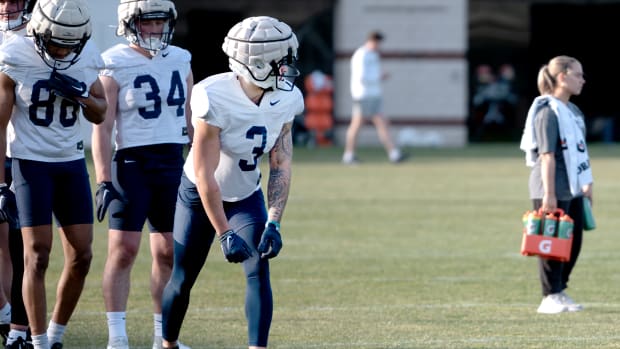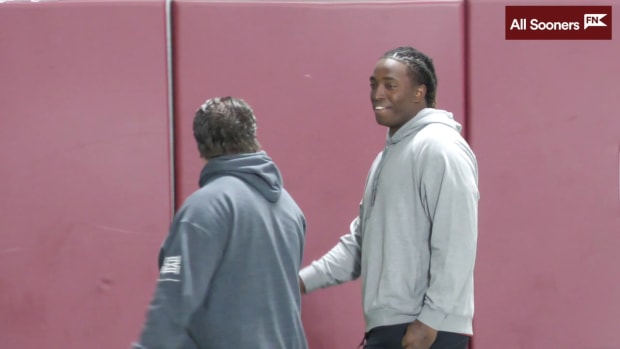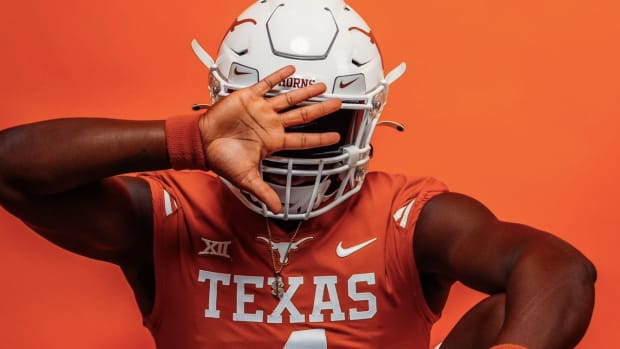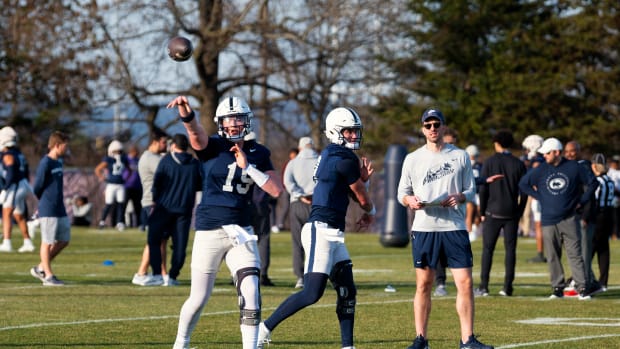The Quandary Facing Recruiting Outlets in a Fluid Era of Transfers in College Football
Joe Burrow, Jalen Hurts and Justin Fields have something in common. Well, let’s be honest, they have a lot in common. They’ve captained their teams to the College Football Playoff, were prolific enough to earn a trip to the Heisman Trophy ceremony and each started their careers at another school. There is something else they have in common: They were not factored into the team recruiting rankings of their new schools.
That may be changing soon enough. In an era of college football marked by marquee transfers, recruiting outlets such as 247Sports and Rivals are searching for a solution to fix what’s becoming a glaring peculiarity: The sites do not include even high-profile transferring players into signing class rankings. “I think we are working towards transfers becoming a part of our team rankings,” says Barton Simmons, 247Sports’ director of scouting, “but it’s going to be a challenge.”
During the opening day of the NCAA’s early signing period Wednesday, thousands of high school and junior college players turned verbal commitments into binding pledges, their individual star ratings creating the all-important team ranking. Clemson brought home the No. 1 class in 247Sports’ composite rankings while Alabama landed at No. 2 and Ohio State No. 3. Recruiting is no exact science, as they say, and that goes for team rankings. After all, these are basically a compilation of predictions. Even worse, the predictions are of teenagers evaluated sometimes from afar by recruiting reporters who can be partial to their region or territory. That said, a team’s final ranking is at least an indicator of its talent haul compared to its peers, stacked side-by-side in a 1-through-130 pecking order.
Team rankings have proven to produce on-field results, too. Of the 11 teams to advance to the first six College Football Playoffs, eight of them signed at least two top-10 classes over the previous four years. The four CFP participants this year—LSU, Ohio State, Oklahoma and Clemson—all rank inside the top 11 of the 2020 team rankings as Wednesday wound down. Missing from those rankings are potential transfers who will join the team in the spring and summer. While transfers don’t impact a team’s ranking, they do affect a team’s roster management. Transfers count as part of the signing class, a reason many coaches avoid using all 25 of their spots during the two signing periods, leaving a couple open for transfers.
That happened in Baton Rouge a year-and-a-half ago. Burrow, recent winner of the Heisman Trophy, transferred from Ohio State to LSU in May 2018 and counted toward the Tigers’ 2018 signing class that ranked 15th nationally. His addition didn’t impact that ranking. Another example is Hurts’s move from Alabama to Oklahoma this past year. The Sooners’ 2019 class was ranked sixth nationally—it excluded a quarterback who helped lead the Tide to consecutive national championship games. “The way coaches view it, if you get Hurts, that’s like getting a five-star even if you’re only getting him for one year,” says Woody Wommack, a longtime Rivals recruiting analyst.
Rivals officials have discussed incorporating some sort of “transfer impact rating,” says Mike Farrell, Rivals’ national recruiting director. Farrell, half-joking, says he’s trademarking that name—transfer impact rating—so as to prevent his competition from stealing it. What will the impact rating entail? It’s hard to say, he admits. Rating or ranking transfers is tricky from an evaluation standpoint. College programs are often cloaked in secrecy. Practices are mostly closed, off-the-field behavior is normally buried and game tape is sometimes non-existent. In fact, many transfers have rarely played in a game at all, like Burrow, a third-stringer for the Buckeyes for much of his time in Columbus. “Joe Burrow is a great example,” Simmons says. “What do you do with Joe Burrow? The process has to be using our resources and connections and find out about what a staff thinks about a guy. How much can you really trust that?”
Simmons’s outfit at 247Sports has started rating—not ranking—transfers, he says, but those ratings do not factor into overall team numbers. However, times are changing, and Simmons expects that 247Sports will soon incorporate at least some transfers into a team’s ranking. “We’ve got to find a solution,” he says. “I think probably as much as anything, a transfer would be treated as a regular prospect in how his rankings affects the class.” But there are other things to take into account like eligibility remaining and immediate impact ability, all of which “needs to be baked into a player rating,” Simmons says. That’s why using a prospect’s star rating from high school doesn’t always work. Fields, who has three more years of eligibility remaining after transferring from Georgia to Ohio State this offseason, cannot be ranked the same as Hurts, who is playing his final year.
The bottom line, recruiting experts all agree, is that something must change. The rate of transfers is so high that ignoring them cannot continue. It’s somewhat glaring. This year, Kentucky signed Auburn transfer Joey Gatewood, a 6-foot-5, 230-pound quarterback who signed out of high school as a four-star and top-50 ranked prospect nationally. UK’s 2020 class is ranked 23rd nationally and buried at the bottom of its signees is Gatewood—with no rating or ranking listed, a non-factor in that No. 23. “It’s become such an integral part of roster building,” Simmons says. “The transfer market has become something that changes the fortunes of teams.”
The old motto in college football of “winning signing day” is beginning to shift, experts say—you must win the transfer season, too. The transfers portal, implemented last year, has only increased this trend, one that began more than a decade ago. In 2008, the transfer rate in FBS football was 11.2%, or about 1,225 players. In 2018, the transfer rate was 13.6%, or about 1,604 players. Graduate transfer numbers have ballooned too, from 70 in 2014 to 168 in 2017. Not all of them are successful. Just like high school busts, there are transfer portal misses. Take former Ohio State quarterback Tate Martell, who not only lost the starting QB job at Miami but was moved to receiver. Quarterback Brandon Wimbush, transferring from Notre Dame to UCF, lasted just a couple of games as the starter before seeing the bench.
Many coaches anonymously polled for this story are actually against having transfers count towards a team’s signing class ranking. “They are an instant grab,” says one FBS assistant. “Others you recruit and work for an extended period of time.” However, there are many who believe a high-profile enough player should impact a ranking in some way. “I’ve had some say, ‘Why aren’t we getting credit for this?!’” Wommack says.
Well, maybe soon they will. For now, transfers are unaccounted-for bonuses. And if you got guys named Burrow, Hurts and Fields, the bonus is quite nice.

